By: Niklas Svantesson
Introduction
Betrayal at House on the Hill™ is a family board game for 3-6 players of ages 12 and up. The scenario is that a group of people decide to explore an old abandoned house, on a hill. Eventually, one of the players will betray the others. The game then becomes a fight between the Traitor and the rest of the players. However, the fight between the players can be quite different between play sessions, as there are a number of scenarios that affect what the goals the Traitor has. This also determines what goals the other players have as well.
The game
The components of Betrayal at House on the Hill™ can be divided into the following categories:
-Individual rooms, that together makes up the game board.
-Player avatars, represented by game pieces.
-Monsters, represented by tokens.
-Items, represented by cards and sometimes tokens.
-Omens, usually treated as items.
-Events, described on game cards.
Rooms
These make up the game board. Unlike most board games, the rooms are not all part of a large game board, but instead each room is game piece in its own right. Each room has at least four properties. First off they have names. The room’s names are important since they can affect the Haunt (described later). Secondly they have a set number of doors. The doors determine how the room pieces can be fit together. Each new room that is added (discovered) to the game board must be connected with already existing rooms via its doors. Thirdly the rooms have a floor they are associated with, shown on the backside of each room piece. The floors are Upper, Ground and Lower. If a new room is discovered on the upper floor, then it must be associated with the upper floor in order to be added, otherwise it is put aside and another floor is drawn. Some rooms are restricted to only one floor while others can be placed on two or all of the floors. Finally, the rooms have a position relative to each other depending on how they are discovered.
Each room may have a number of properties in addition to those mentioned. First off they may have a symbol on them. There are three different types of symbols: and Event symbol, an Omen symbol and/or an Item symbol. A room may also have unique properties, for example a set of stairs enable transition between floors. Other rooms may require a player avatar to make a successful stat roll or suffer a penalty (more on stat rolls in the player avatar section).
Player avatars
Each player avatar is represented by a game piece and a character plate. The character plates have two characters each. Only one is in play at any one time. Each plate has a color that binds it to the game piece with the same color. Each piece has a position which is the room they are currently standing in. Each player avatar is owned by one of the players.
Each player avatar has four different stats: Might, Speed, Sanity and Knowledge.
The stats are divided into two categories: Physical (Might & Speed) and Mental (Sanity & Knowledge)
Physical Stats
Might
The Might stat is mainly used in combat. The more Might a player avatar have, the stronger they will be in combat.
Speed
Speed is mainly used to determine how far a player avatar can move. They can move through one room for each point of speed they have. At times, Speed is be used instead of Might in combat.
Mental Stats
Sanity & Knowledge
Sanity & Knowledge are mostly used for stat rolls (described below) but may be used for combat in certain scenarios or when certain items are in play.
All stats function as a form of health points. If any stat goes down to zero, represented on the character plate as a skull, the character is dead. All stats are also used when making stat rolls. These can be triggered by a room’s unique properties or the effects of a drawn card. Stat rolls means the player controlling the character takes a number of dice (specified by the event) and rolls them trying to get the same value as the stat being tested or lower. The dice are six-sided but with two sides for 0, two for 1 and two for 2 so they roll 0-2 rather than 1-6.
A player avatar may own any number of items and/or omens (which are usually treated as items). These items can be used, traded or dropped by a player avatar (more about this in sections about items and omens). Items and omens that are dropped can also be picked up by a player in the same room. There is no restriction on how many or few items/omens can be dropped or picked up, and there is no need to drop all items/omens owned or pick up all items/omens in a pile.
Player avatars may also engage in combat with one another or with a monster if they are in the same room. However winning a combat may allow a player avatar to steal an item from their opponent instead of dealing damage.
Monsters
When one of the players becomes a Traitor they may or may not receive control over a number of monsters, depending on which Haunt scenario is played. How a monster behaves and what attributes it has depends on the monster itself. For example some monsters may carry items while others can’t.
They do have stats, just like the player avatars, but not necessarily all four of them. For example some monsters, like Frankenstein’s Monster, only have physical attributes (Speed & Might).
Monsters do inhibit player movement however. If a player is in the same room as a monster, moving from that room will cost an extra move point. Monsters may or may not be hindered by players in the same room, depending on the monster itself.
Monsters cannot discover new rooms, unless specified. The monster’s movement patterns, as well as any actions they may take, are also different between each type of monster. For example, Frankenstein’s Monster has a speed value of 3 and always moves towards the closest non-Traitor hero. The Snake Ouroboros however has two heads that each rolls a die for how many movement points they have each round. The movement is controlled by the Traitor player.
Card objects
The following components are all represented by game cards in one way or another: Item, Omen and Event.
Items
Items are objects that can be owned by a player avatar. Whenever they are collected the player controlling said avatar collects an item card that describes what it does. The cards determine the properties of the items, such as adding a certain number to a stat roll. An item is therefore represented by that card, which is usually kept by the player until it is used.
An item can at times also be represented by a token. If one or more items are dropped by a player, by choice or due to death, they stay in the room the player dropped them in. They are represented by an item pile token, placed on the room piece, in addition to being represented by cards. The cards themselves are set aside until they are picked up again.
Omens
Omens are like items except they also force the player avatar that first pick it up to make a Haunt roll at the end of the turn. The amount of omen cards picked up between players also has an effect on the Haunt roll (more explained below in the Haunt roll section).
Event
There is one final type of card called event. The event is an effect that is applied as soon as a player avatar collects the card describing it. Some event only have an immediate effect after which they are removed, however some of them have lingering effects and as such are kept by the player avatar until they no longer apply. Events cannot be dropped or traded.
Relationships
Rooms have no real relationship to one another other than that new rooms must be placed connecting to an already placed room via a door, and any other rooms in contact with the newly placed room also have to be connected via doors. Otherwise a new room is chosen.
Rooms have several potential relationships with a player avatar though. A room’s unique properties may give a player avatar an option to move between that room and another room that may not be directly connected, such as using a hidden passage. In some cases, this movement is forced.
Whenever a player avatar is first to enter a room with a symbol on it, it must draw a card corresponding with the symbol, for example if a player walks into a room with an Omen symbol on it that avatar’s player must draw an Omen card. If a player avatar’s player is forced to draw a card, any remaining that avatar has is discarded that turn.
A room may also force a player avatar to make a stat roll whenever said avatar wants to move out of the room. Usually the stat that is used in the roll is decreased if the test is failed, but movement is not hindered in either case.
If a player avatar becomes the Traitor they may ignore a lot of the negative effects a room might have on them as well as choosing if an event card that is drawn actually happens or not. This depends on the Haunt scenario though.
The relationships between the rooms and the monster are whole dependent on the type of monster and the Haunt scenario, for example some monster may not be affected by certain room’s unique properties that force stat checks. They may or may not be able to freely use the transition between rooms that is forced for the players. Some rooms may enable the players to win against certain monsters much easier than otherwise possible.
Player avatars that are in the same room may attack each other in order to steal items or inflict damage. The same goes for players and monsters in the same room.
Combat
Combat means that the attacker takes a number of dice equal to the might value and rolls them, adding the result. The defender then does the same and the results are compared. Whomever gets a higher total wins and may choose to either inflict damage or steal an item from their opponent.
If damage is inflicted it is usually inflicted as physical damage, and is equal to the difference in the values both participants rolled. If one roll 8 and the other rolls 6 then 2 damage is inflicted on the looser. Receiving damage means a stat is decreased the same number of steps as the amount of damage received. Damage may be divided between Might and Speed as the receiver wishes. For example the 2 damage may be taken as one point of damage each to Might and Speed or as 2 points of damage to one of them.
Attacks may sometimes rely on one of the other stats instead of Might. If an attack relies on Knowledge or Sanity, that attack inflicts mental damage, which is the same as physical only the damage is divided between Sanity and Knowledge instead of Might and Speed.
Mental attacks are not possible against all monsters as some of them are missing any mental attributes.
Items and Omens may come into play in combat in several ways. They may boost the attack of one player, they might enable a player to use one of the other stats and some items can transform physical damage to mental and vice versa.
The Haunt
Whenever a player avatar collects an omen card the controlling player must make a Haunt roll at the end of the turn. The player collects one die for each player in the game and rolls them, adding the results. If the results show a number lower than the total amount of Omen cards present in the game between all the players, a Haunt occurs.
That player then becomes the Haunt Revealer. The Haunt Revealer opens the Traitor’s Tome, a separate manual for this event, and looks up which haunt has occurred. This is determined by which room the Haunt Revealer is currently in as well as the name of the Omen card that was drawn last. This also determines who the Traitor is.
The Haunt Revealer takes the Traitor’s Tome and leaves the room. He or She will then read the instructions specific for the haunt that occurred, informing what the Traitor’s goals are, but not what the other players’ (now called Heroes) goals are.
The rest of the players stay and read their instructions in another manual called Secrets of Survival.
The game ends when either the Traitor or the Heroes reach their goal. The goals may or may not be to murder each other. Some Haunts have a hidden Traitor while others have no Traitor at all.
Core System
I consider the core of this game to be exploration of the mansion. It is through exploration that new rooms are added, Events occur, Items and Omens get collected. It is the exploration that eventually leads to a Haunt being triggered, but it also continues after the Haunt has been revealed.
Most interesting system
The most interesting system this game has is the Haunt as it has about 40 different scenarios that may play out, adding a lot of re-playability to the game. It also randomizes who the traitor is rather than having one player designated as the “Bad Guy” at the start of the game.
The fact that a haunt can take many shapes and also occur at very varying points in the game, though it becomes more likely as time progresses, means it is hard to prepare for and thus keeps the players on their toes.
Best
One of the best parts of the game is the dice. They are numbered 0-2 meaning a roll can potentially have no effect at all. For example and event may cause a character to lose one die of Might, but since 0 is a possible roll the player could be spared the penalty.
Another one of the best parts is the fact that movement is stopped once a card is drawn. This keeps a steady pace of exploration and also prevents individual players from accumulating a heap of Items and Omens.
Last of the best parts of the game is the many different haunt scenarios that can happen. This gives the game much variation between play sessions.
Worst
The stat changes can be very sudden and very strong, meaning a little luck could make one of the player avatars severely overpowered. This goes both ways as well, a little bit of bad luck could potentially leave a player avatar severely underpowered.
Target Group
The target group for this games is ages ranging 12 and up. I think this is pretty good since at a lower age the rules might be a bit hard to follow. Some maturity is also needed in a game where suddenly all other players are against you.
Summary
Betrayal at House on the Hill™ is a game that creates an exploration experience with horror elements through uncertainty and sudden betrayal. It does this very well and the fact that the mansion looks different each time as well as the unpredictable nature of the Haunt makes this game very re-playable.
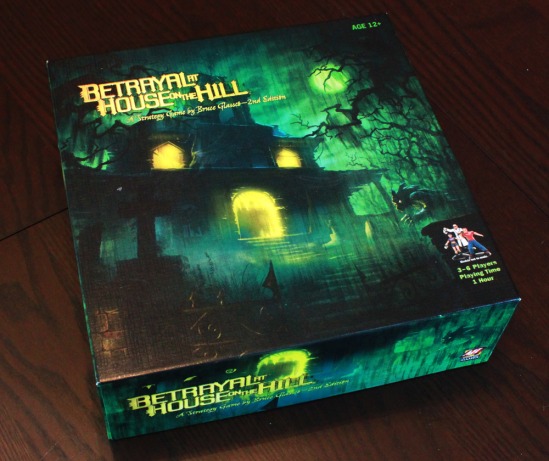
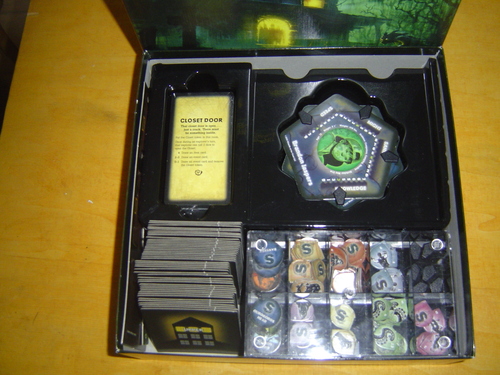
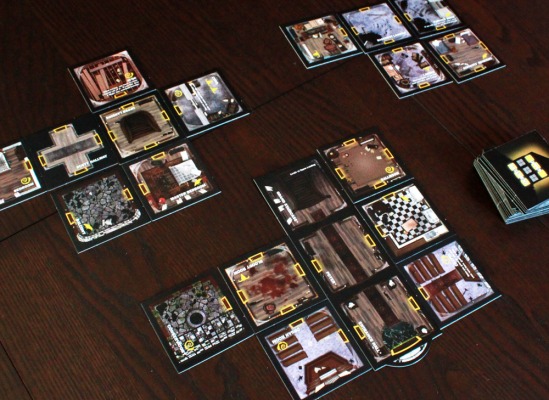
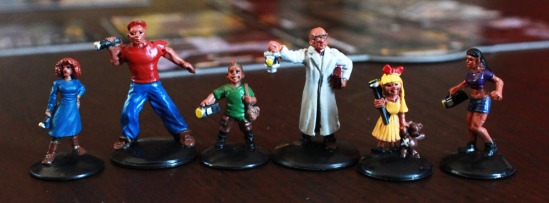

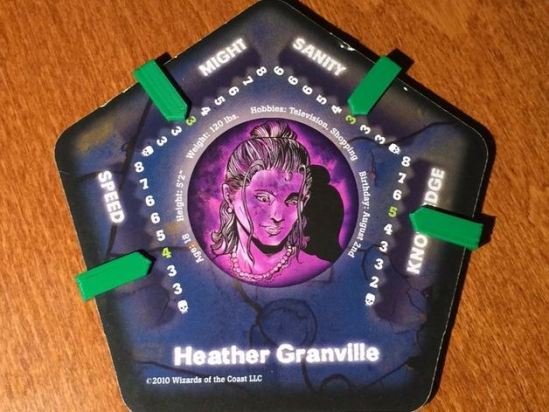
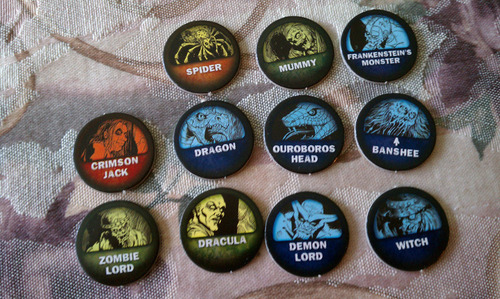
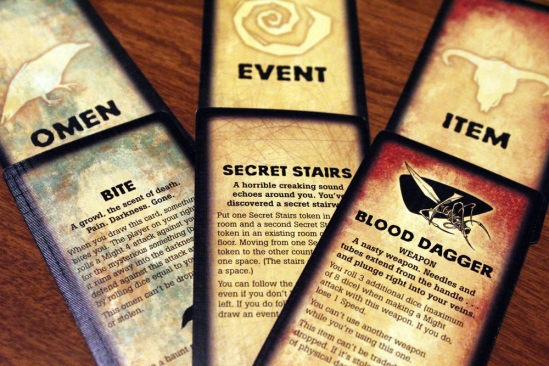
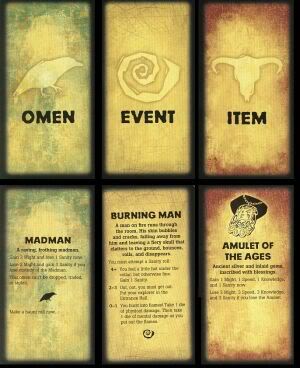
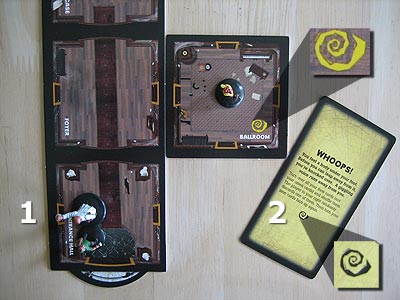
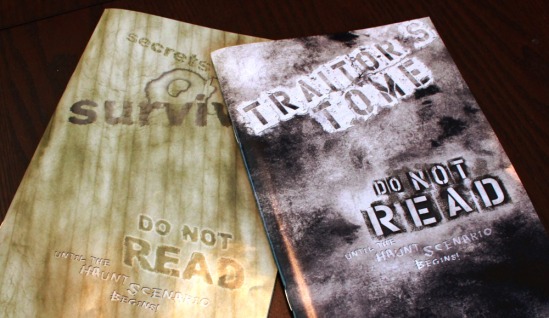
Hi,
This is my review of your review and my take on the game as well. Firstly I will just point out that I didn’t like this game very much but I will try to keep it as objectively as I can anyway.
The core system of the game:
As you mention it is definitely the movement and exploration of the house that is the core system since that’s the main activity that takes place. I totally agree with this but I also want to add one more thing to this. If you would strip this game of all that it has except the exploration part of the game then you are left with a game with no goal or purpose so I would also argue that the haunt is actually part of the core mechanic because without it this game would not be a game at all. The dice rolls could be removed or changed to a different system so could all the random event and omen cards. Instead of random events you could have no events at all or events fixed to a certain room and it would still feel like the same game as long as the exploration and haunt part is left in the game.
So as I see it the movement/exploration and the haunt is the core of this game.
The Haunt:
So let’s take a look at the haunt. It is definitely the most interesting system and it is the core of this game. There are 40-50 different “haunts” or in another words missions or scenarios. Having so many different scenarios adds a lot to re-playability and it gives a feeling of not knowing what to expect. This is a really nice element to the game and as you mention giving every player a chance to play the bad guy is also nice.
So anyway if the haunt is the core of the game then the beginning part of the game is just the exploration part. The haunt only starts if a player fail the die roll so theoretically the haunt could start very late in the game if every player is lucky. Personally the first part of the game was quite boring for me. Just exploring and reading event cards and collecting items. I wanted more tension in this phase but I just didn’t feel it. I think the game need something more here. Maybe other smaller enemies or ghosts or whatever adds more sense of danger and excitement.
When the haunt eventually kicks in the real game starts and there is much more to the game as you have to fight the monster or monsters that spawned and you have to plan your strategy with the other players and work together depending on the type of haunt you are facing.
The Best parts:
You mention that you think the dice rolls, part of the movement mechanic and the different scenarios of the haunt are the best parts. Well, I agree with you on the last part. The different scenarios are really nice and you never know what will happen but I didn’t like the dice rolls at all.
It felt clunky and I would rather see less dice in one roll or no dice at all, maybe even a completely different type of system. Though I do understand why the creators of this game went with a dice roll. It’s easy and anyone can do it. But personally for me it was one dice roll after another in everything you did and I quickly became bored because of all the randomness.
Not all randomness is bad though. The way the house has random rooms are nice as well as what haunt it will be is quite good.
The Worst parts:
Here you say that you don’t like the stat changes. Well I agree with you in a way. All players start off with different stats. Some weaker and some stronger but none of the characters have special abilities to compensate their weaknesses so why have different stats at start at all? I think that in how the game is built now all characters should have the same starting stats because if you start out weak you will be more likely to fail. If on the other hand the weaker ones would have abilities to compensate for this then its fine. So I agree with you that here the game was quite unbalanced and unfair.
Target group:
Well I think the age of 12 is quite right for this game, a younger audience usually have a more vivid imagination so I guess they would find this game really good and perhaps even scary. But as for a target group I would also like to add people who enjoy story based games because this is filled with it. I on the other hand don’t like too much story so I quickly became bored when playing this game.
And also as for all board games you need to enjoy playing with others. Especially this game because but one player play as a team. I guess people who enjoy competitive style games would like to play as the bad guy in this game but since that is random that’s not really a target group.
Final words:
This was definitely not a game for me which surprised me because I used to like story based games. I guess I like more mechanical games and heavy strategy these days but I would play it again if asked. I can see why people like it. If you are into a game with deep story and enjoy playing with your friends then this is the game.
And some notes to the reviewer. You explain the game and all parts quite good and it’s easy to follow. It would however been more interesting if you would have focused more on writing about the different systems of the game explaining why you think it made a good game instead you just wrote this was bad and this was good. So my tip for you is that for the next time you write try to focus more on the “Why” and less on “How” it works.
/Georgios